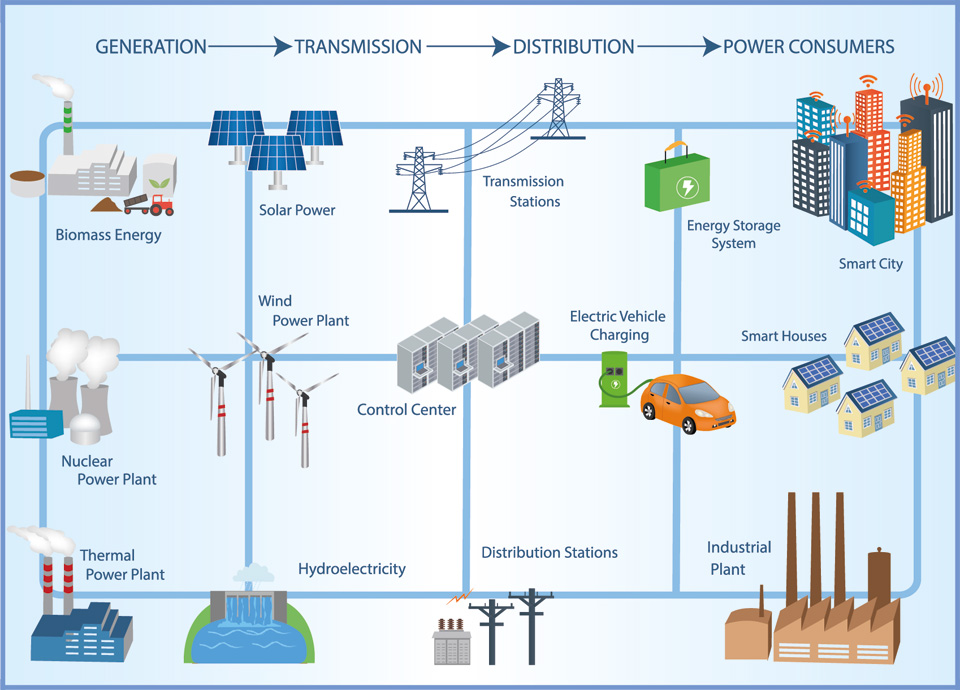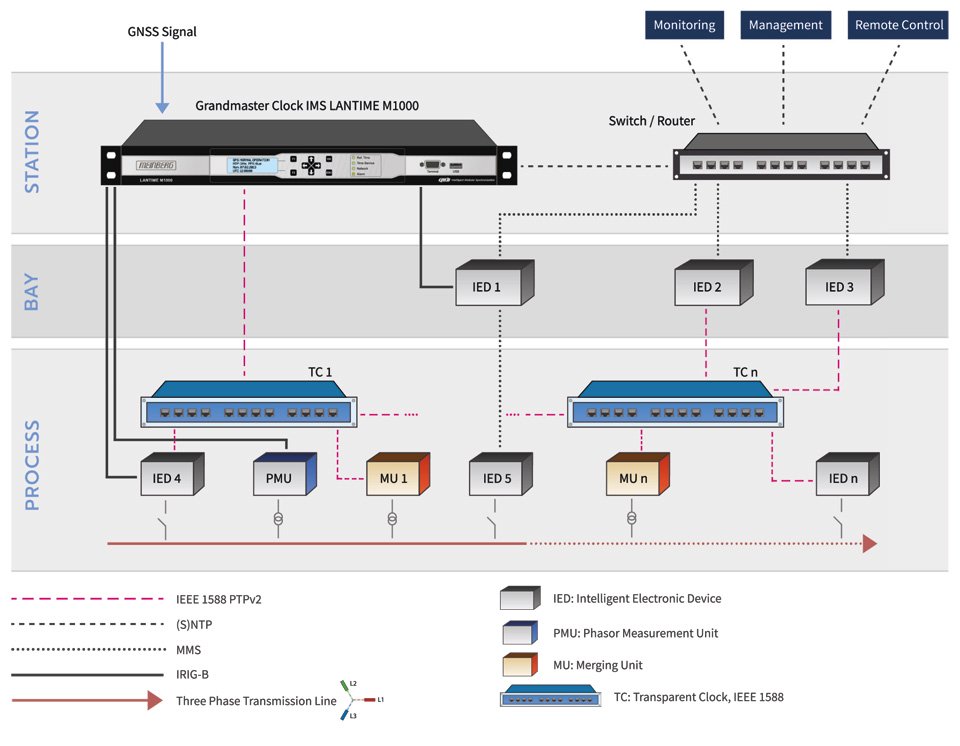Precise Timing for Power Industries and the Smart Grid

The Smart Grid is a 21st century concept, reducing CO2 emissions through more sustainable energy use while meeting growing demand for electricity worldwide. Through the integrated actions of all users – generators, distributors and consumers – the Smart Grid combines innovative products and services with advanced monitoring, control, self-healing technologies and two-way communications.
Precision and reliability are critical in time and frequency synchronization of power network nodes used in Smart Grid applications. Accurate synchronization helps accelerating a broad range of Smart Grid operations, such as fault detection and network clearing, synchrophasor measurement to monitor network stability, sequence of event time stamping, data acquisition, demand side management (DSM), differential protection, frequency deviation measurements (FDM), smart metering synchronization and many other applications.
Meinberg addresses the demanding sync requirements of power grids with a versatile product range of time and frequency synchronization appliances. Meinberg offers flexible and precise synchronization solutions, in accordance with IEEE 1588 PTPv2, IEEE C.37.238-2011, IEEE C.37.238-2017 Power and IEC/IEEE 61850-9-3 Power Utility Profile as well as IEC 61850 standard for power plants, substations and end users.
Active Participiants in the Smart Grid
Energy providers
Power generators, renewable energy resources and optimized storage options promote the most economic forms of energy.
In the future: High efficiency for all participants
Efficient use of renewable energy reduces consumption of fossil fuels and the production of nuclear waste. The Smart Grid
infrastructure is optimized to achieve these goals.
Substation automation
Resources are monitored and controlled to ensure a continuous supply of energy.
Network operations
Grid operators receive communication from sources within the grid community and send data, such as pricing and rate signals,
back to all participants.
End consumers
Electric distribution substations transform power from transmission voltage to lower voltage, used for local distribution to
homes and businesses.
Consumer devices
Receive utility pricing and rate signals to guide smart energy use decisions.
Synchronization in Power Utilities
As one of the most important nodes in the Smart Grid, substations manage the optimal regulation of electrical power in the network, including existing power plants, distributed renewable energy and end consumers. Precise time synchronization is poised to play an even more significant role, as intelligent two-way power grids become fully functional.
Substation Automation
Precise time synchronization in substation automation must fulfill different requirements at station, bay and process levels (see Figure 2). Monitoring and control systems, PCs and remote devices at the station level require accuracy in the millisecond range, which can be provided by the NTP or SNTP time protocol over an existing LAN network. The IEDs (Intelligent Electronic Devices) and MUs (Merging Units) at the bay and process levels require accuracies of 1μs, achieved based on the IEEE 1588 PTPv2 protocol and applied with PTP compliant switches from the process level.IRIG-B and 1PPS signals, usually used for time synchronization at bay and process levels, require separate, costly coaxial cabling; a Meinberg PTP Grandmaster Clock enables synchronization over an existing LAN with IEEE 1588 PTPv2-compliant switches, providing a cost-effective solution with ultimate precision, even over PRP networks.
Synchronized Phasor Measurements
Phasor measurement to monitor the stability of electrical networks is another essential element of Smart Grid performance, and is based on Phasor Measurement Units (PMUs). Sine voltages and currents are represented as complex values, and according to IEEE C37.118-20111, phase angles shall be synchronized by IRIG-B signal with the accuracy ± 31μs and ± 26μs for 50 and 60Hz networks, respectively.Meinberg time systems offer a wide variety of IRIG-B outputs as well as IEEE 1588 PTPv2 synchronization, meeting even higher accuracy requirements for future power grids.
* In 2005 the IEEE C37.118 standard superseded the IEEE 1344 standard for synchrophasors for power systems.
Down below you will find Meinberg's solutions for accurate and reliable frequency control:
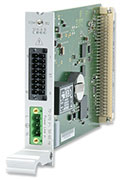
Frequency deviation monitoring in 50/60 Hz supply networks
Read More...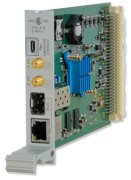
PTP / SyncE / Hardware NTP Interface with Dual Core CPU
Read More...
Time and Frequency Synchronization Platform in 1U Rackmount-Enclosure
Read More...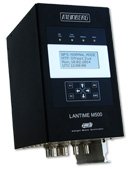
Time and Frequency Synchronization in Rail Mount Chassis
Read More...
Powerful IEEE 1588 PTP Grandmaster and NTP Server in a 19 inch Rackmount Enclosure
Read More...
Signal Distribution Unit for PPS, 10 MHz and IRIG Signals
Read More...
Converter for Outputting IRIG Time Code, 10MHz, PPS, DCF77 and Serial Time Strings Based on NTP or IEEE1588 Input
Read More...References:
- Smart Grids, European technology platform for the electricity networks of the future.
- Hirschmann, White Paper - Data Communication in Substation Automation System (SAS) - Time synchronization in substation automation.
- IEEE Power Engineering Society, IEEE C37.118-2017: The IEEE Standard for Synchrophasors for Power Systems.


